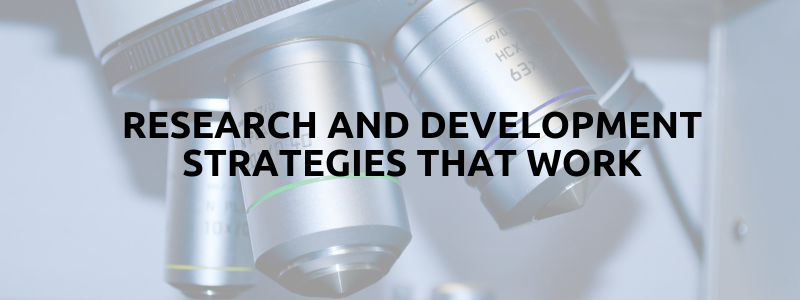
Research and Development Strategies That Work
Simply following change is not a realistic option for many businesses, if they are to stay competitive. Instead they must be at the forefront of change, and the means to do this is by developing research and development strategies that work.
With a product portfolio serving a wide range of industries, and an understanding of the value of prototyping and combined thermal management solutions, Elmelin recognises the strategic value of R&D, and why it matters in helping businesses differentiate themselves through innovation.
Managing Research and Development
The management of R&D and establishing its processes are vital components. It needs to be objective-driven, looking to add intrinsic value, whether through process application or product development.
As such, R&D should have explicit relationships with business objectives.

For example, if it is about developing high temperature insulation applications for a specific product range, what will ensure it is most cost effective, and how will innovation help leverage competition in the marketplace?
Innovation through R&D is the lifeblood of many businesses, because it allows them to compete on an alternative basis to price alone. This is especially true of niche manufacturers in the UK.
What research and development can do is open up more space for manoeuvrability in marketplaces, increasing efficiency and improving profitability.
Process-driven Research and Development must therefore have qualitative or quantitative growth targets to work to, whether this are for incremental or radical innovation, or for making key efficiencies.
R&D With Clarity and Function
If R&D is not going to appear as a bolt-on, but rather be central to business objectives and an integral part of strategy, the business must clarify what its role is, and how it will interact with other organisational areas.
These will include things such as production, marketing and sales.
R&D strategy can have wide-reaching implications for a business as a whole, which is why it is vital that its conclusions do not come as a surprise to other functions, but are seen as working with them to improve the whole entity.
Demystifying R&D
The supportive aspects of R&D and its business benefits require clear communications within any business, because often change can seem challenging.

Reorganisations are often a source of anxiety, so it matters that any such changes driven by R&D are demonstrated to be ultimately positive. Again it is about making sure that research and development are built in to an overall business strategy, and are not somewhere outside it.
It may be that while R&D drives change, it can also bring with it new opportunities within businesses and organisations, not least through their expansion and market growth on the back of it.
R&D is therefore also people-focused, as well as being about improved processes and products.
Testing Feasibility Under Pressure
Elmelin works with key industries where safety is paramount, and where the pressures of production are inherent to how they operate.
For example, in the foundry and steel industry, where furnace safety and efficiency are inextricably linked to productivity.
Therefore, the effectiveness of research and development strategies depends on vigorous, diligent testing, in conditions which, as far as possible, simulate those that will exist in real applications.
This is where prototyping has a crucial part to play in many R&D processes. Testing provides the necessary insight to refine and fine-tune processes and products under pressurised conditions.
Main Advantages of Research & Development
Strategies for R&D should focus on:
Developing a USP – innovation helps create conditions for a unique selling proposition, driving improved products or services;
Boosting income – R&D can bring financial benefits by attracting new investors, as well as enhancing existing income streams, or opening new ones;
Embracing collaboration – R&D projects encourage collaboration, which can then create fruitful future business partnerships;
Occupying a competitive niche – innovation through R&D allows businesses to sidestep a drive to the bottom through pricing and instead focus on other, unique benefits to customers;
Building a reputation – forward-thinking businesses can use this approach to build their brands, developing formidable reputations for innovation;
Tax breaks – businesses can claim R&D tax relief, if they have qualifying R&D expenditure, in some cases payable as tax credits.

Financial Backing for R&D
The Government provides a list of different schemes which can help with various aspects of R&D and innovation. These schemes include research grants and development grants to help SMEs develop and maximise the potential of new ideas and innovative solutions.
It makes sense, therefore, to develop a research and development strategy that plugs into some aspect of this kind of funding, whether it is working collaboratively with a university or using an innovation centre to help transform and idea into a product.
Innovate UK, the national innovation agency, delivers these schemes.
Research and Development and Elmelin
We work with companies that want to innovate and improve processes, products and services. Collaboration is a key aspect of how we deliver a broad range of high temperature insulation products and solutions.
Whatever stage of the R&D journey you are on, please get in touch to discuss your project.
Call us on +44 20 8520 2248, email sales@elmelin.com, or complete our online enquiry form. We’ll get back to you as soon as possible.
